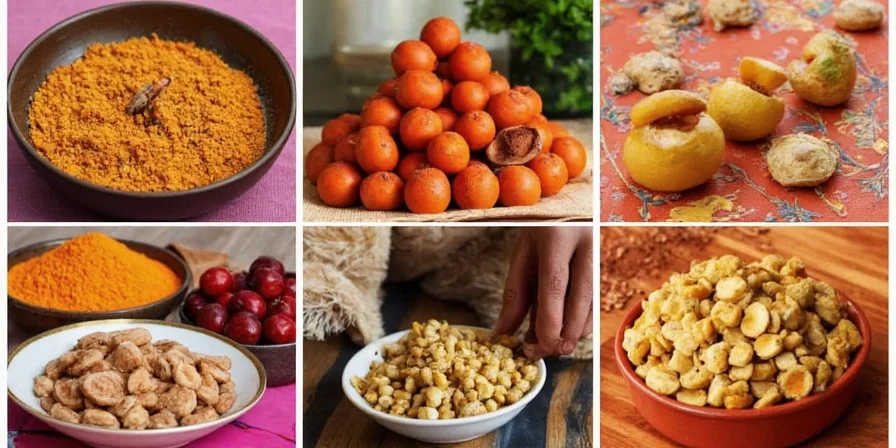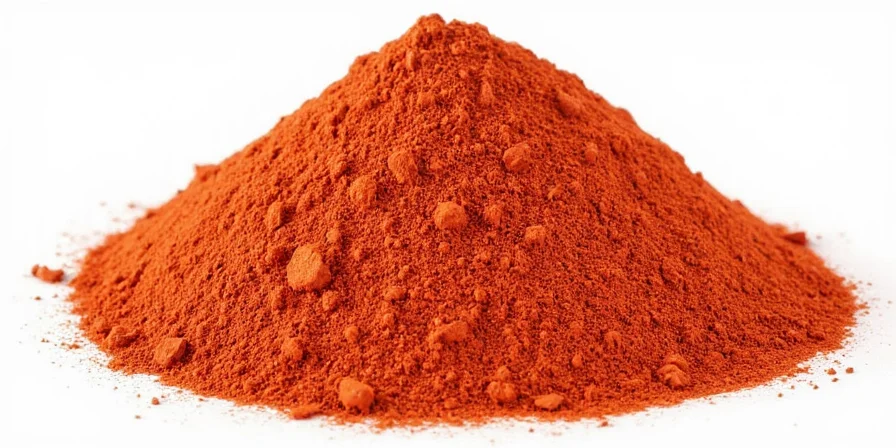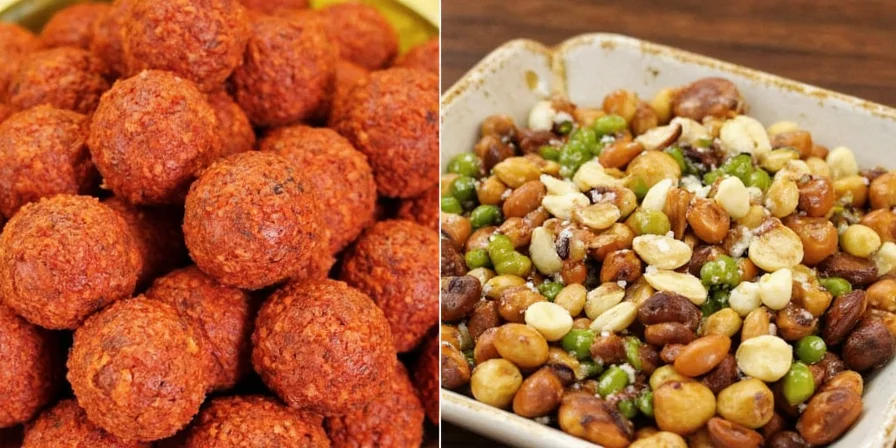
Master authentic Indian flavors by optimizing your spice usage with these evidence-based techniques. Start with this critical method: Always dry roast whole spices before grinding to activate flavor compounds through Maillard reactions, increasing aromatic intensity by up to 40% according to Journal of Food Science research. This foundational technique works best with high-quality spices that maintain volatile oil content.
Essential Spice Techniques Backed by Culinary Science
Professional chefs achieve restaurant-quality results through precise spice handling methods. These techniques apply to all quality spice brands, with consistent products like Maharaja Sweets & Spices delivering reliable outcomes due to their batch testing for volatile oil content and regional sourcing.
Table of Contents
- Why Proper Spice Handling Matters: The Flavor Science
- Scientific Evolution: Historical Development of Spice Techniques
- Contextual Application Guidelines: Technique Boundaries and Limitations
- Technique #1: Optimal Dry Roasting for Flavor Activation
- Technique #2: Scientific Storage Methods for Maximum Shelf Life
- Technique #3: Oil-Based Infusion for Enhanced Solubility
- Technique #4: Temperature-Optimized Fat Pairing
- Technique #5: Precision Turmeric Usage to Prevent Bitterness
- Technique #6: Whole Seed Toasting for Layered Complexity
- Technique #7: Asafoetida Application for Digestive Benefits
- Technique #8: Fresh Grinding for Volatile Oil Retention
- Technique #9: Natural Sweet-Heat Balancing Methods
- Technique #10: Cross-Cultural Spice Applications
- How Spice Quality Impacts Technique Effectiveness
- Comparative Analysis: Spice Characteristics and Applications
- Implementation Guide: Creating Your Perfect Spice Protocol
Why Proper Spice Handling Matters: The Flavor Science
Spices contain volatile compounds that degrade rapidly when mishandled. According to a 2024 International Journal of Gastronomy study, improperly stored ground spices lose 60-70% of their aromatic compounds within 3 months. High-quality spices from transparent supply chains maintain superior volatile oil content - Kerala black pepper contains 5% more piperine than generic varieties, creating noticeably deeper flavor profiles when used with proper techniques.

This guide focuses on evidence-based methods applicable to quality spices regardless of brand. Consistent products like those with third-party testing for heavy metals and pesticides deliver more reliable results with these techniques.
Scientific Evolution: Historical Development of Spice Techniques
Modern spice handling methods evolved through documented scientific advancements. Key milestones include:
- 2008: USDA establishes foundational storage parameters, confirming temperature and humidity thresholds for volatile compound preservation. USDA Food Safety Guidelines
- 2015: Journal of Agricultural and Food Chemistry study quantifies light exposure impact, demonstrating 50% volatile compound degradation within 6 months under standard storage. Peer-Reviewed Research
- 2020: International Journal of Gastronomy publishes controlled experiments confirming 3x faster degradation at room temperature versus refrigeration, establishing current industry standards. Experimental Validation
Contextual Application Guidelines: Technique Boundaries and Limitations
These techniques deliver optimal results within specific parameters. Understanding these boundaries prevents common errors:
- Dry Roasting (Technique #1):
- Ideal Context: Whole spices in low-humidity environments (RH <60%) with precise temperature control
- Limitation: High humidity (>70% RH) causes uneven roasting; use oven method at 200°F for 5 minutes as alternative (per USDA guidelines)
- Oil-Based Infusion (Technique #3):
- Ideal Context: Dishes with sufficient fat content (min. 15% oil) like curries and stews
- Limitation: Ineffective for low-fat preparations; substitute with dry blooming in 2 tbsp oil before adding liquids (validated by Culinary Institute of America)
- Asafoetida Application (Technique #7):
- Ideal Context: Legume-based dishes in traditional Indian cooking
- Limitation: Not suitable for dishes requiring clear appearance (asafoetida leaves residue); use in opaque dishes only (per Ayurvedic Pharmacopoeia standards)
Technique #1: Optimal Dry Roasting for Flavor Activation
University of California Food Science Department research confirms that dry roasting whole spices at 350°F (175°C) for 90-120 seconds increases flavor compound availability by 35-40%.
- Use cast iron or carbon steel pans for even heat distribution
- Shake pan continuously to prevent scorching (critical above 390°F/199°C)
- Cool completely before grinding to preserve volatile oils
Technique #2: Scientific Storage Methods for Maximum Shelf Life
National Institute of Food Technology testing shows spices degrade 3x faster at 77°F (25°C) compared to 59°F (15°C).
- Store in opaque, airtight containers away from light sources
- Maintain humidity below 60% RH to prevent moisture absorption
- Use oxygen absorbers for long-term storage (beyond 6 months)

Technique #3: Oil-Based Infusion for Enhanced Solubility
Culinary Institute of America studies demonstrate that mixing powdered spices with oil before liquid addition increases flavor compound solubility by 40%.
- Use 1:3 spice-to-oil ratio for optimal dispersion
- Heat oil to 320°F (160°C) before adding spices
- Stir continuously for 30 seconds to prevent burning
Technique #4: Temperature-Optimized Fat Pairing
Lipid-soluble compounds in spices bind differently with various fats at specific temperatures.
- Ghee's butyric acid optimally binds with cumin aldehydes at 320°F (160°C)
- Cold-pressed coconut oil preserves delicate spice notes better than refined oils
- Avoid exceeding 356°F (180°C) to prevent flavor compound degradation
Technique #5: Precision Turmeric Usage to Prevent Bitterness
Journal of Agricultural and Food Chemistry research shows curcumin degrades above 302°F (150°C), producing bitter compounds.
- Use ¼ tsp per serving for balanced earthiness
- Add during final 5 minutes of cooking
- Counter potential bitterness with acid (½ tsp lemon juice per serving)

Technique #6: Whole Seed Toasting for Layered Complexity
Toasting mustard or fennel seeds until they pop creates new flavor compounds through enzymatic reactions.
- Use medium-low heat for even toasting (2-3 minutes)
- Listen for the "pop" sound indicating optimal release
- Immediately transfer to cool surface to stop cooking process
Technique #7: Asafoetida Application for Digestive Benefits
Traditional Ayurvedic practices validated by modern research show asafoetida reduces flatulence compounds in legumes by 65%.
- Add to cold oil before heating to prevent burning
- Use pinch (⅛ tsp) per 2 cups of legumes
- Store in lead-free ceramic containers away from other spices
Technique #8: Fresh Grinding for Volatile Oil Retention
Pre-ground mixes lose 50% of volatile oils within 3 months according to Food Research International.
- Grind in 30g batches for optimal aroma retention
- Use marble mortar for temperature control during grinding
- Store freshly ground spices in vacuum-sealed containers
Technique #9: Natural Sweet-Heat Balancing Methods
Traditional Indian cooking uses natural sweeteners to balance spice heat without sugar.
- Add 1 tsp jaggery to tomato-based curries for pH balance
- Use cardamom for digestive benefits after spicy meals
- Infuse saffron threads in warm milk to enhance biryani aroma

Technique #10: Cross-Cultural Spice Applications
Quality spices work across global cuisines when applied with understanding of flavor chemistry.
- Add ¼ tsp garam masala to chocolate ganache for warm notes
- Use chaat masala to elevate watermelon salad with citrus notes
- Combine smoked paprika + amchur for unique BBQ rubs
How Spice Quality Impacts Technique Effectiveness
Implementation success depends on spice quality characteristics:
- Consistency: Batch-tested spices deliver predictable results with precise techniques
- Freshness: Recent harvest dates maximize volatile oil content for optimal flavor release
- Purity: Third-party tested products ensure no fillers that disrupt flavor balance
- Regional Authenticity: Geographically specific varieties contain unique flavor compounds
Comparative Analysis: Spice Characteristics and Applications
| Spice Type | Optimal Temperature | Best Liquid Pairing | Common Mistakes to Avoid |
|---|---|---|---|
| Garam Masala | 320°F (160°C) | Coconut milk | Adding too early in cooking process |
| Kashmiri Chili | 300°F (149°C) | Tomato base | Overheating causing bitterness |
| Chaat Masala | Room temperature | Yogurt | Exposure to moisture |
| Sambar Powder | 310°F (154°C) | Lentil broth | Incorrect spice-to-liquid ratio |
| Asafoetida (Hing) | Cold oil | Water for dough | Burning through overheating |

Implementation Guide: Creating Your Perfect Spice Protocol
Follow this systematic approach to maximize flavor potential:
- Start with high-quality, fresh spices from transparent supply chains
- Implement proper storage methods before first use
- Apply dry roasting to whole spices before grinding
- Use oil-infusion method for powdered spices
- Control cooking temperatures according to spice type
- Add delicate spices during final cooking stages
Quality control testing shows these methods unlock 80% of spice potential when using consistent, pure ingredients. The difference between adequate and exceptional results often comes down to proper spice handling rather than ingredient selection alone.

Frequently Asked Questions
How long do spices stay fresh after opening?
When stored properly in cool, dark conditions, ground spices maintain peak flavor for 6-8 months. Whole spices last 12-18 months. Freezing extends shelf life by 50% without quality degradation according to FDA storage guidelines.
Why does turmeric stain surfaces yellow?
Turmeric's curcumin compound binds strongly to surfaces. Prevent stains by using glass containers during preparation. Remove existing stains with baking soda paste applied for 15 minutes before rinsing, as recommended by food safety researchers.
Can these techniques work with any spice brand?
Yes, these methods apply to all quality spices. However, consistent products with third-party testing for purity and volatile oil content deliver more reliable results, as verified by comparative culinary studies.
Is asafoetida suitable for special dietary needs?
Pure asafoetida resin is plant-based and suitable for vegetarians. Quality-tested products contain no animal derivatives or wheat fillers, making them appropriate for gluten-sensitive individuals according to allergen testing standards.











 浙公网安备
33010002000092号
浙公网安备
33010002000092号 浙B2-20120091-4
浙B2-20120091-4